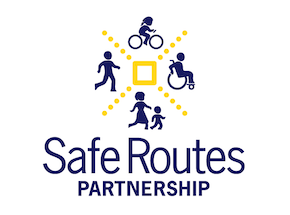 Policy comes in many shapes and sizes. Some use the idea or comparison of BIG P and little p policy. A BIG P policy might be one that is at the state level, even one that is made into a law. Little p’s are smaller, possibly at the local government, or in the case of Safe Routes to School at the individual school level.
Policy comes in many shapes and sizes. Some use the idea or comparison of BIG P and little p policy. A BIG P policy might be one that is at the state level, even one that is made into a law. Little p’s are smaller, possibly at the local government, or in the case of Safe Routes to School at the individual school level.
Resource Library
This policy briefdescribes research showing the benefits of physical activityfor student learning, explains the state requirements andstandards for P.E., highlights board actions to support P.E.and lists additional resources board members and othersmight find useful.
California Senate District 7 is home to suburban bedroom communities such as Dublin, Antioch and Walnut Creek. District 7 is also the beneficiary of over $8,000,000 in Safe Routes to School grants, as Senator Mark DeSaulnier, Senate Transportation Committee Chair, learned from advocates Thursday Aug 15. The meeting between DeSaulnier, Safe Routes Partnership Director Deb Hubsmith, and local advocates was one of 65 meetings with legislators and their staff as part of the first Safe Routes to School Advocay Day in California.
In a March 2012 research brief, Impact of State Laws on Walking and Bicycling to School, Active Living Research was the first to examine the impact of state laws on walking and bicycling to school among a national sample of elementary schools in the United States.
 The 7th Annual Southern Obesity Summit (SOS) is being held in Nashville, Tennessee. From November 17 -19, 2013, hundreds of participants from sixteen southern states will meet to share strategies in the fight against obesity.
The 7th Annual Southern Obesity Summit (SOS) is being held in Nashville, Tennessee. From November 17 -19, 2013, hundreds of participants from sixteen southern states will meet to share strategies in the fight against obesity.
This webinar from September 26, 2013 discusses how the Safe Routes Partnership can help support campaigns to increase shared use and street scale improvements in underserved communities.
 You might have heard that I was diagnosed on October 17 with acute myeloid leukemia, and I am now in the hospital healing. I so greatly appreciate the outpouring of support of prayers and healing vibrations from the community- it lifts my spirits and helps me to stay strong.
You might have heard that I was diagnosed on October 17 with acute myeloid leukemia, and I am now in the hospital healing. I so greatly appreciate the outpouring of support of prayers and healing vibrations from the community- it lifts my spirits and helps me to stay strong.
Part IV of the series "Steps to a Walkable Community: A Guide for Citizens, Planners, and Engineers."
 The Port Towns Youth Council (PTYC) Wellness Ambassadors are at it again! On December 9, 2013 the Town Council of Bladensburg adopted the PTYC’s Pedestrian Safety Policy.
The Port Towns Youth Council (PTYC) Wellness Ambassadors are at it again! On December 9, 2013 the Town Council of Bladensburg adopted the PTYC’s Pedestrian Safety Policy.
This brief created by the National Center for Safe Routes to School to address unsafe driving behaviors and outlines steps local safe routes to school programs can take to measure impacts of their activities.

These briefings sheets were developed with funding support from the National Center for Safe Routes to School. The briefing sheets are intended for use by transportation engineers and planners to support their active participation in the development and implementation of Safe Routes to School programs and activities.
 During the month of February, America paused to celebrate the historical achievements of African-American pioneers all over the nation. In March, the celebration continues, but with a different theme.
During the month of February, America paused to celebrate the historical achievements of African-American pioneers all over the nation. In March, the celebration continues, but with a different theme.
By using SB 375 as an opportunity for taking control of future gowth and transportation decisions through regional planning, communities can stimulate construction and economic growth, reduce vehicle pollution, save money, and improve transportation choices.

On May 8, 2012, the Institute of Medicine (IOM) released a consensus report funded by the Robert Wood Johnson Foundation Accelerating Progress in Obesity Prevention: Solving the Weight of the Nation. Two-thirds of adults and one-third of children are overweight or obese.
 As the 2013-14 academic school year ends, report cards are issued across the country. Grades in academic courses, physical education and the arts can lead to celebrations of achievement, or discouragement about not making the grade.
As the 2013-14 academic school year ends, report cards are issued across the country. Grades in academic courses, physical education and the arts can lead to celebrations of achievement, or discouragement about not making the grade.
This fact sheet provides an overview for advocates and community members on the benefits of complete streets policies. NPLAN has models and findings that you can tailor and use in your community.
 After only a handful of hearings in the Senate and House this year focusing on a long term fix for our nation’s surface transportation needs, Congress sent a clear message last week to all those who hoped for long-term action: let’s talk next year!
After only a handful of hearings in the Senate and House this year focusing on a long term fix for our nation’s surface transportation needs, Congress sent a clear message last week to all those who hoped for long-term action: let’s talk next year!
Here’s how it all went down:
This article highlights the impact the bicycle industry and bicycle tourism have on state and local economies; describes the need for bicycle facilities, discusses the cost-effectiveness of investments, points out the benefits of bike facilities for business districts and neighborhoods, and identifies the cost savings associated with mode shift.

